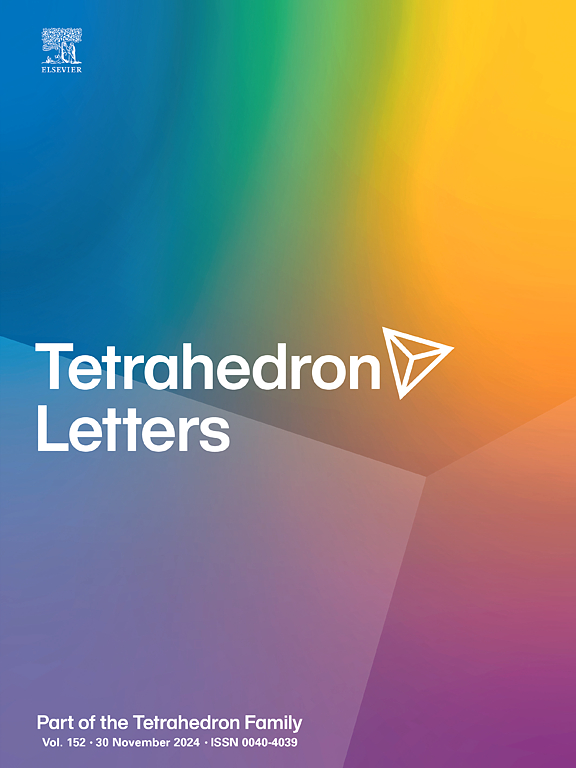Catalytic asymmetric approach to floral odorant, (+)- and (−)-Florhydral
IF 1.5
4区 化学
Q3 CHEMISTRY, ORGANIC
引用次数: 0
Abstract
Catalytic asymmetric total synthesis of either enantiomer of floral odorant, i.e. (+)-florhydral® (1a) and (−)-florhydral® (ent-1a) has been achieved via a key catalytic asymmetric 3-isopropyl benzene boronic acid addition onto ethyl crotonate. Thus, an efficient two-step approach to both enantiomers of florhydral has been shown using 2 mol% Rh-(S)-BINAP (L1) as catalyst to achieve the product with a stereogenic center at the pseudo-benzylic position (up to 90 % ee).

(+)-和(−)-花水合醛的催化不对称研究
通过催化不对称3-异丙基苯硼酸加成到巴豆酸乙酯上,实现了花香剂对映体(+)-florhydral®(1a)和(−)-florhydral®(ent-1a)的催化不对称全合成。因此,使用2mol % Rh-(S)- binap (L1)作为催化剂,两步法有效地合成了florhydral的两种对映异构体,以获得在拟苯基位置具有立体中心的产物(高达90% ee)。
本文章由计算机程序翻译,如有差异,请以英文原文为准。
求助全文
约1分钟内获得全文
求助全文
来源期刊

Tetrahedron Letters
化学-有机化学
CiteScore
3.50
自引率
5.60%
发文量
521
审稿时长
28 days
期刊介绍:
Tetrahedron Letters provides maximum dissemination of outstanding developments in organic chemistry. The journal is published weekly and covers developments in techniques, structures, methods and conclusions in experimental and theoretical organic chemistry. Rapid publication of timely and significant research results enables researchers from all over the world to transmit quickly their new contributions to large, international audiences.
 求助内容:
求助内容: 应助结果提醒方式:
应助结果提醒方式:


